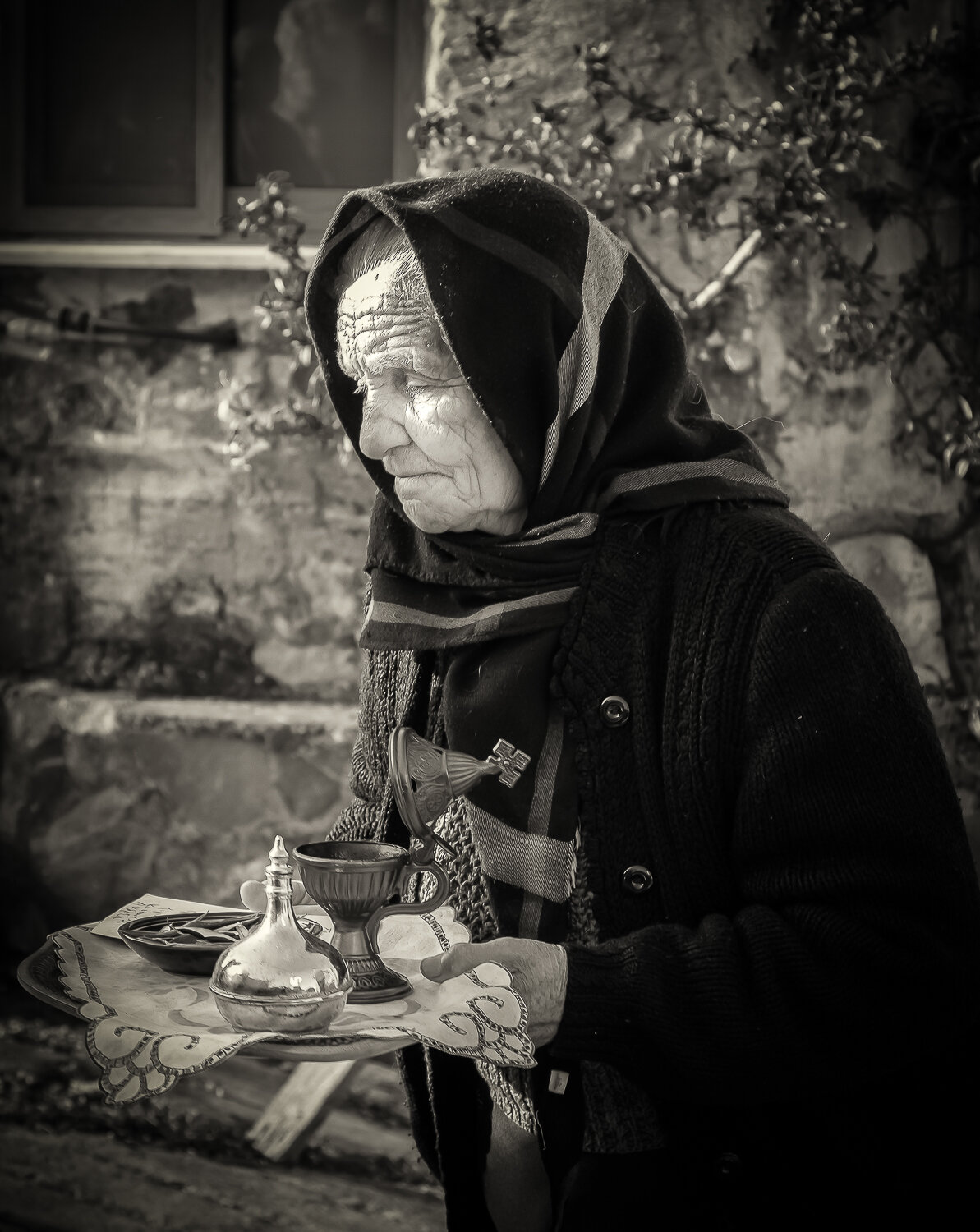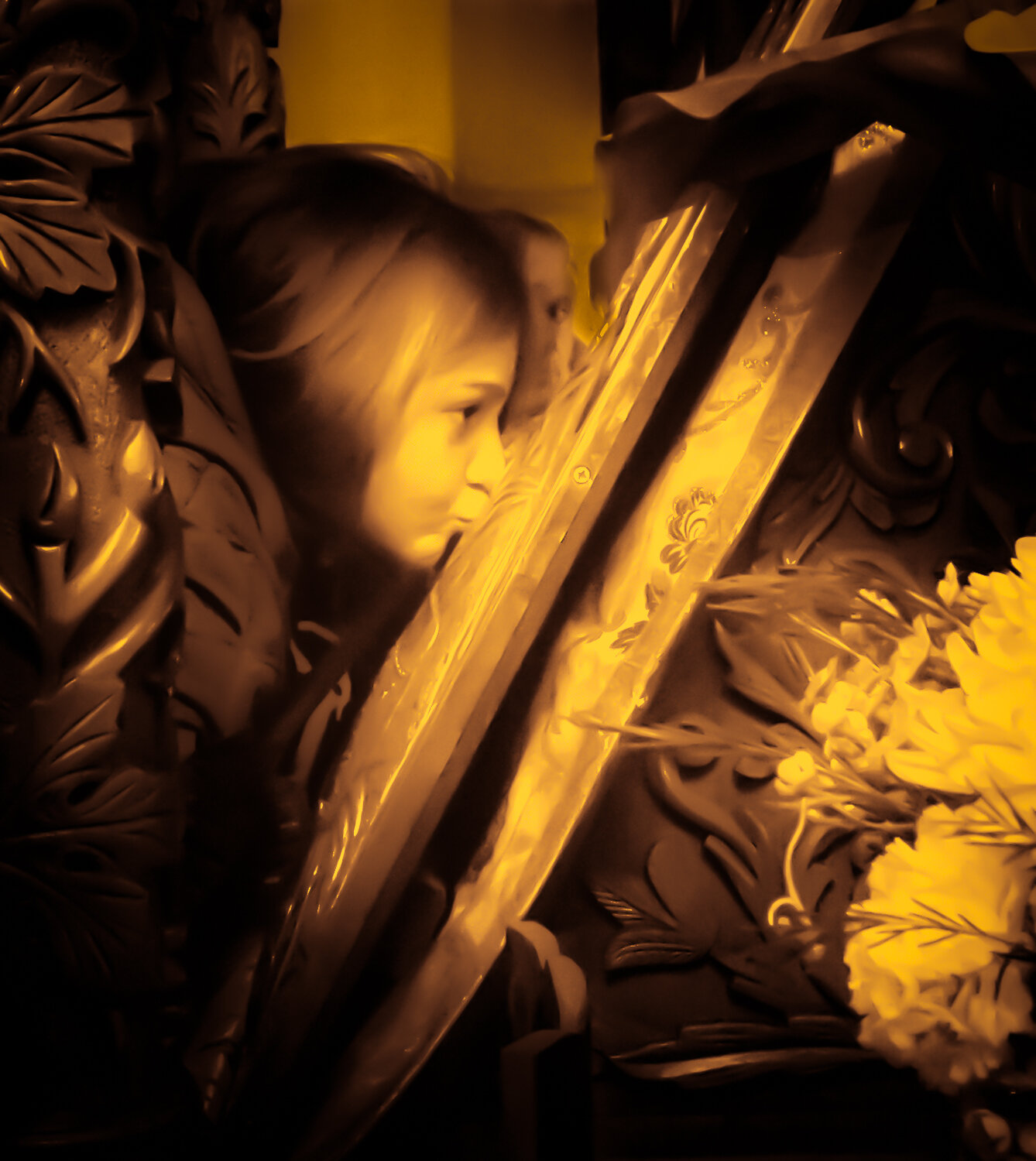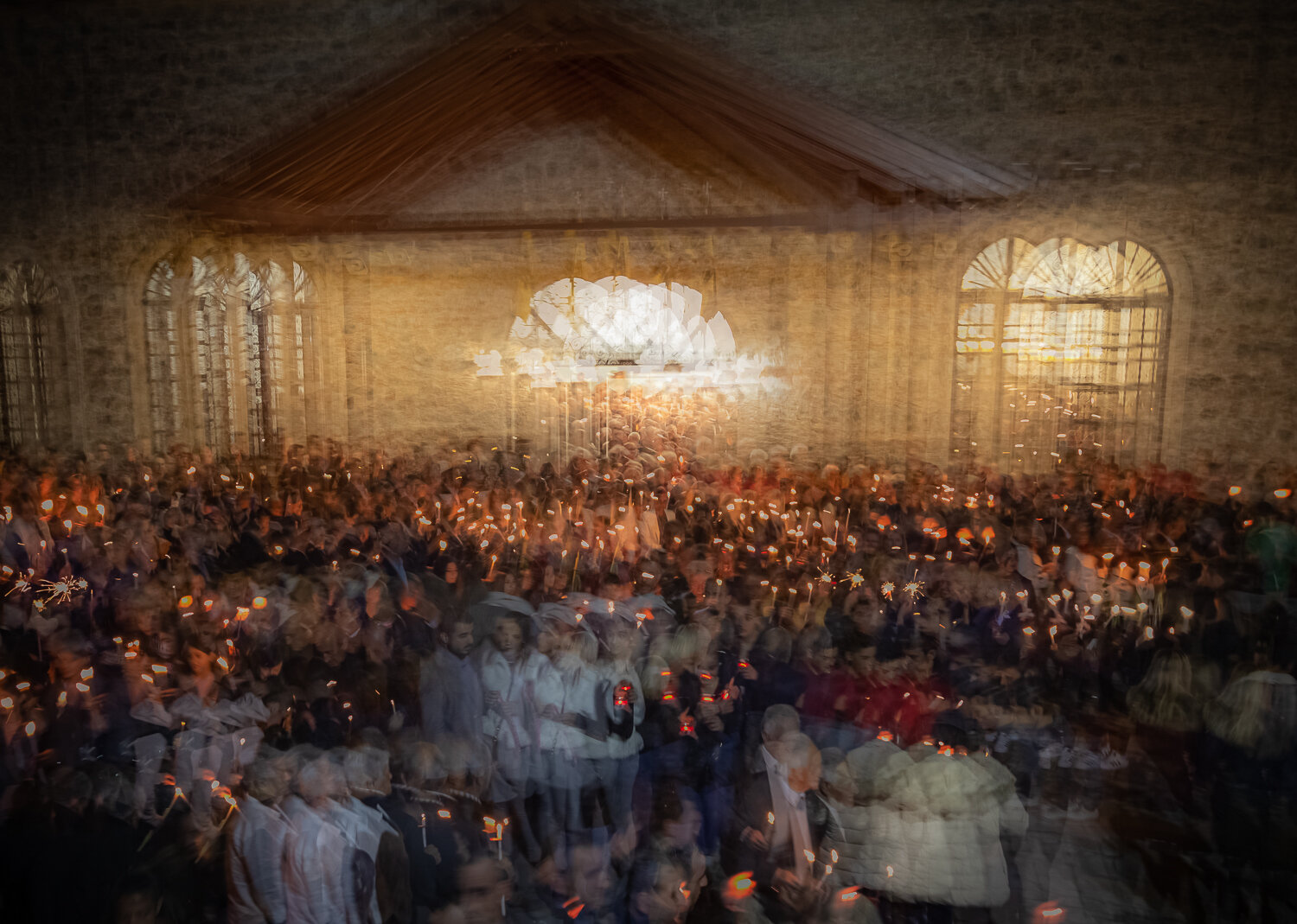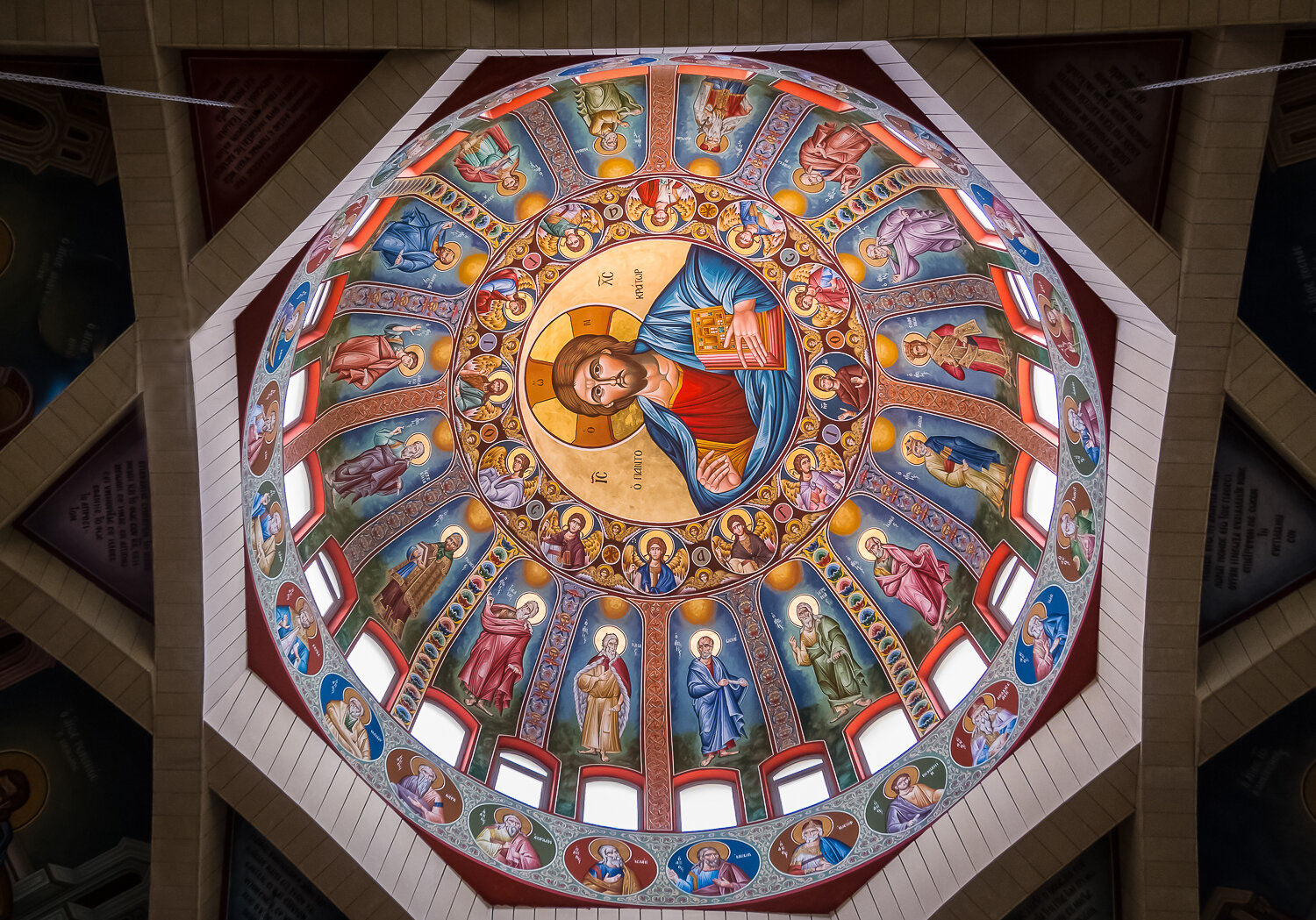Religion
You cannot begin to comprehend the Spirit of Cyprus without appreciating and imbibing the role religion plays. Since the cult of Aphrodite was established on the island in the middle of the second millennium BC, religion has been a constant motif of Cypriot life. Over the millennia it has evolved and propagated diverse strands from pagan gods, competing interpretations of the Christian faith, to other monotheistic religions such as Judaism and, more recently, Islam.
Its mark can be seen everywhere – Cyprus probably has the most religious sites per square mile than any other country, from chapels to churches and monasteries, from abbeys and mosques to temples that honour ancient gods. They literally can be found anywhere; in batches and clusters in villages or towns; on a remote road in the countryside; in secluded locations out of man’s eye; on top of high peaks; in caves or carved out of mountain rock; in the many remains of ancient civilisations; even on golf courses and beaches, defying the modern day pillager of tradition that is tourism.
But it is in the conscience of man, put there over countless generations, that you find its mark on the Spirit of Cyprus. It manifests itself through customs and rituals and beliefs that define life, and in countless myths and legends and miracles that sustain faith.
Often its marks are things of beauty and inspiration – stunning Byzantine architecture; jaw dropping works of art frescoed into countless ceilings and walls; mosaics depicting scenes of legends and myths; pristine white mosques rising like swans out of sunburnt landscapes; statues from antiquity that glorify the beauty and strength of man and woman; and in the bagatelle of religious arts and crafts.
Sometimes it can reveal itself in ugly ways, most plainly in the all too visible remains of communal strife rooted in medieval religious enmities that has led to Division and Abandonment.
Throughout all the turmoil of the ages, religion has been the constant cord that has bonded its respective community and forged their identity.
Note: This theme plays such a large part in Cypriot society that it is broken into a number of sub-sections covering diversity, the priesthood, religious practices and traditions, its symbols, Easter and the role of light.
Rites and Rituals
Devotion - Ayios Nikolaos church, Polemidia
Although Orthodoxy differs in certain aspects of theology from other Christian churches, it is in how it is practised that defines how it is experienced.
Over the centuries local cultural religious customs have morphed and knitted together the way of life with the way of worship. So much so that these rites and rituals have become compatible with the conventional ‘official’ practices of the Orthodox church, blurring the edges between religious piety, faith and ordinary living. They have come to define the interaction between the church and its congregation – for example processions and marching bands, saint’s name-day fairs, the kissing of powerful icons and priests’ hands etc.
Religious rites, customs and superstitions are rife – from the popular kapnisma or holy smoke ritual of purification and blessing, to the komboskini or prayer rope often worn as a bracelet, some blessed over the remains of a saint to give it more power. Although acts of devotion may border on superstition and idolatry, they are part of what makes a Greek Cypriot.
The ‘Phos’
‘I am the light of the world…’
Ayios Georgios, nr Choirokoitia
… Christ announced according to John 8:12. Although the use of light was not without controversy in the early centuries of Christianity, in the Orthodox church today the light - or Phos - plays a major ceremonial and commemorative role. Perhaps the most significant is on the stroke of midnight on Easter Saturday when the ‘Holy Fire’ appears from behind the iconostasis in Orthodox churches around the world to announce Xristos Anesti – Christ has risen.
Light is interwoven into my experiences of the Orthodox church, whether it’s the spectacle of the spreading Holy Fire amongst an over-crowded and fervent congregation on Easter Saturday; or in the candles we light on entering a church for the living in need or to remember those who have left us; or when lighting the eternal flames in small oil lamps that stand in vigil over the graves of loved ones; or when flickering yellow candle light exposes the long-ago painted faces of revered apostles, saints and martyrs on walls or icons ; or when sunlight breaks through to light up corners and recesses or artefacts in dark ancient churches and chapels ; or when the setting sun bathes the work of stone masons and architects down the ages.
Whether the Light of God or something more temporal, I perceive religion in Cypriot life in terms of light and colour.
Pascha
The epitafio leaves Ayia Paraskevi church to begin its slow procession through the crowded streets of Yeriskipou
Although united in a common theism, the Orthodox church celebrates its faith in many different ways from its Christian counterparts. The observance of Easter – arguably the most important ceremony in the Orthodox calendar – is perhaps the best example. The parting of the ways dates from the Great Schism of 1054 and the introduction of the Gregorian calendar 500 years later. As the name implies, Orthodox practices have remained faithful to traditional interpretations, including how to calculate the date on which Easter will be celebrated. And boy do they celebrate.
Easter commands Greek Cypriot life for days – what you eat and what you cook; how you engage with the church (often and bring your own candles); the way you greet one another; and how and when to celebrate with your family, coming together across all generations in a shared display of piety and adoration - and eating.
Multiple social and religious rites surround Easter, from baking flaounes and painting eggs, the countless processions around churches, along streets and even through mountains, to the lighting of the Phos and the ostentatious floral adornment of the epitafio and kouvouklion. And of course the Easter Sunday family mega-souvla which marks a joyous resurrection following days of commemoration of a tragic death, filling the skies with charcoal smoke in the process. Pascha, in its entirety, is a gross over-indulgence in which all Greek Cypriots immerse themselves – and I love it.
Easter church services, spread over several days, are a mesmerising concoction of overflowing congregations, flickering candle lights and roaring fires intermingled with chants and psalms that tremble the senses…
…the midnight vigil on Easter Saturday that announces Xristos Annesti - Panayia Eleousa church, Agros
Orthodox Iconography
A quiet niche in which to converse with the saints - Ayios Mamas church, Louvaras
Symbols proliferate throughout Orthodoxy, from signs of the cross, assorted incense-burning thuribles, and liturgical vestments to motifs from nature such as flowers and fruit and, perhaps the most important of all, the fish. But the most prevalent of all in the Orthodox faith are its icons - religious works of art that are representations of saints, biblical events and characters from the scriptures. They can be painted on wood, cast in metal, carved in stone, or frescoed into walls and ceilings. Many have attained legendary status for being linked to miracles or depicting saints with miraculous powers that can cure every type of ailment or can be called upon to resolve all kinds of challenges in life.
Although many are the recipients of passionate demonstrations of devotion and reverence, and that icons can be found in most Christian Cypriot homes, the church is keen to stress that they are not idols but visual religious representations. Witnessing how they are affectionately kissed, taken on processions, reverently held and extravagantly prostrated to, it is tempting to observe that they are indeed worshipped.
Idolised or not, they are generally considered works of art, some of which date back more than a thousand years, and some internationally recognised - most notably the 12 painted churches designated as Unesco world heritage sites.
The Brotherhood
The fraternity of Orthodox priests is a male preserve. Long hair and beards are their hallmarks, a tradition whose roots lie in biblical instruction and in an act of devotion to the Orthodox image of Christ.
The Brotherhood, Machairas Monastery
It is difficult to understate the position Orthodox clergy have in Greek Cypriot society. They are not only spiritual leaders in a country where spirituality runs deep, but also historically they were counsellors, educators, arbitrators, advisors, neighbours, friends, spokesmen and political leaders. Not only do they take care of the ritual aspects of religious life that lie at the heart of Greek Cypriot culture and tradition…
… they are also full-on partners in the life-cycle of their parishioners from child birth, baptism and marriage through to death, servicing any religious needs in between. In return they are supported financially by their community and held in high respect for their ‘martyrdom’, their status reflected in their elaborate vestments and opulent treasury of accessories.
Religious Diversity
Ayia Kyriaki Chrysopolitissa, Paphos
The island’s incessant , often radical and occasionally violent change that defines its historical evolution has propagated diversity in the imprint left by religion. Diversity can be found in location, from beaches to mountain tops; in architectural styles from classical temples and Ottoman minarets to Byzantine monasteries and Latin cathedrals; in faith from pagan idolatry and Catholicism to Islam and a variety of Orthodox interpretations; and in vintage, from pre-Christian and Byzantine to neo-classical and modern. Often this diversity is visible in one location, and sometimes on one site.
Ayia Kyriaki Chrysopolitissa church in Paphos is one such multi-denominational structure. In its grounds can be found echoes of Cyprus’ history going back 2000 years from the pillar where the Apostle Paul was tied and whipped in Roman times for preaching Christianity; to the ruins of early 4th to 7th century Byzantine columns and mosaics; to the medieval remains of a Catholic Franciscan presence from the time of the Frankish crusader rulers; to the domed Ottoman baths added during their occupation; to today’s modest Anglican church built as an Orthodox basilica in the 16th century.




















































































